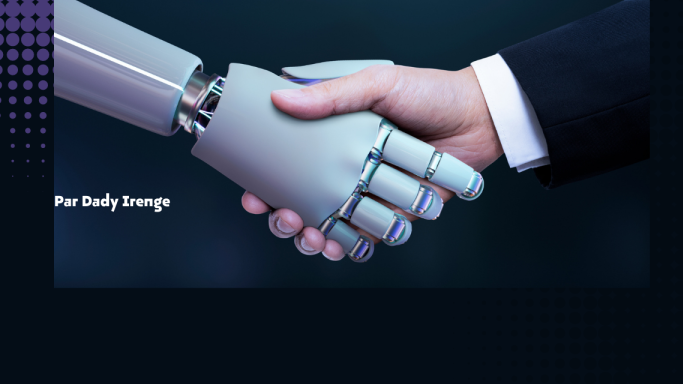
Artificial intelligence (AI) is a technology that aims to simulate human intelligence. It is used in fields such as image recognition, speech recognition, text recognition, robotics and automatic natural language processing systems. AI is also used in debt management and in the collection agent function for some collection companies in developing countries* such as developed ones.
The use of artificial intelligence (AI) in commercial sectors is constantly growing, and the debt collection sector is no exception. Companies looking to improve their efficiency and profitability are increasingly turning to AI to automate processes, improve data quality, and improve relationships with customers and employees.
Historically, the debt collection process was manual, slow and costly. Collection agents spent hours looking at account documents and calling debtors to try to collect funds owed. This could be a stressful process for employees and often inefficient for businesses. However, with the advent of AI, companies have the opportunity to automate and optimize the collection process.
However, it is important to note that the DRC may face particular challenges in the use of AI in debt collection, such as lack of digital infrastructure, user training and limited access to electricity (hence the use of renewable energies can change the situation).
In this article, we will explore the different ways that AI can be used in traditional debt collection and in the collection agent function for businesses, including process automation, data analysis and communication. with customers. We'll also look at the pros and cons of using AI in collections, as well as the future prospects for this ever-evolving technology.
1. Automation of the collection process:
One of the ways to use AI to improve the efficiency of the debt collection process in developing countries is to automate the process. AI systems can be used to automate the management of receivables portfolios, analyze account and payment data, classify files according to their urgency, send automatic reminders to debtors. This automation can save collection companies or any other type of business time and money by allowing their agents to focus on more important tasks.
2. Data analysis:
AI can also be used to analyze data related to the Account collection process. For example, AI can be used to identify customer payment trends, common types of errors in transactions, factors impacting debt recovery rate, or debt trends based on the type of debtor. Data analytics can help collections companies target their efforts to the most important debts, improve data quality and improve decision making accordingly.
3. Communication with customers:
AI can also be used to improve communication with customers. For example, AI systems can be used to send personalized notifications to customers who have overdue payments, to increase recovery rates. AI systems can also be used to filter incoming calls based on the urgency of the claim, allowing debt collectors to focus on the most important claims.
4. Future prospects:
AI is still evolving and AI applications in debt collection could quickly become more and more advanced. For example, AI could be used to detect company-wide collection trends, predict credit status, give a debtor's confidence level based on past receivables from various Creditors, Improve searches for bad debtors based on geolocation data, Improve facial recognition to avoid duplicating debtors, Facilitate prospecting studies by determining in which area there are more insolvents, carry out a study (pre- risk) before the actual risk study based on the debtor's history with financial institutions, etc. which would allow the company to improve its collection strategy. Additionally, AI could be used to predict payment trends in advance, allowing businesses to prepare for non-payment.
5. Advantages and disadvantages of using AI in debt collection:
Although AI offers many benefits for collection companies in all countries including developing ones, it is important to note that setting up an AI system can also be costly, time-consuming and expertise for its implementation. In addition, the implementation of an AI system can also pose ethical problems, such as violation of customer privacy, discrimination based on factors such as age, ethnicity or income level, or the misuse of AI to aggressively collect debts. It is therefore important to ensure that the implementation of AI complies with regulations.
Conclusion :
AI is transforming the debt collection industry, offering it great potential to increase efficiency, improve data quality and improve decision-making. Automation of the collections process, data analysis and communication with customers are important areas where AI can be used to improve the performance of collections companies.
However, before implementing an AI system in debt collection, it is important to consider the pros and cons of using this technology.
Ultimately, the success of debt collection incorporating AI in developing or developed countries will depend on their ability to adapt to technological and regulatory changes, as well as to implement ethical and efficient practices.
IRENGE HABAMUNGU Gloire-dady
#debtcollection #credit #debtcollectionafrica #civilivestigations #debtcollectioninnovation
.jpg)
